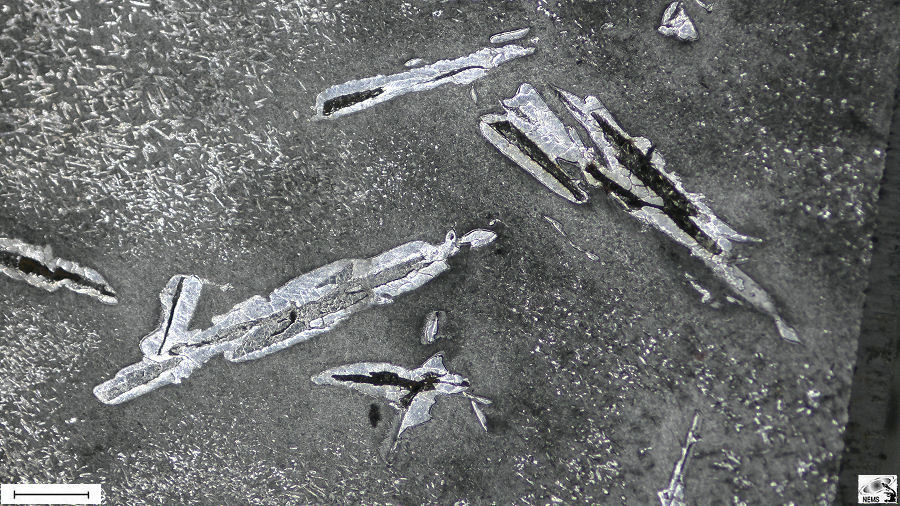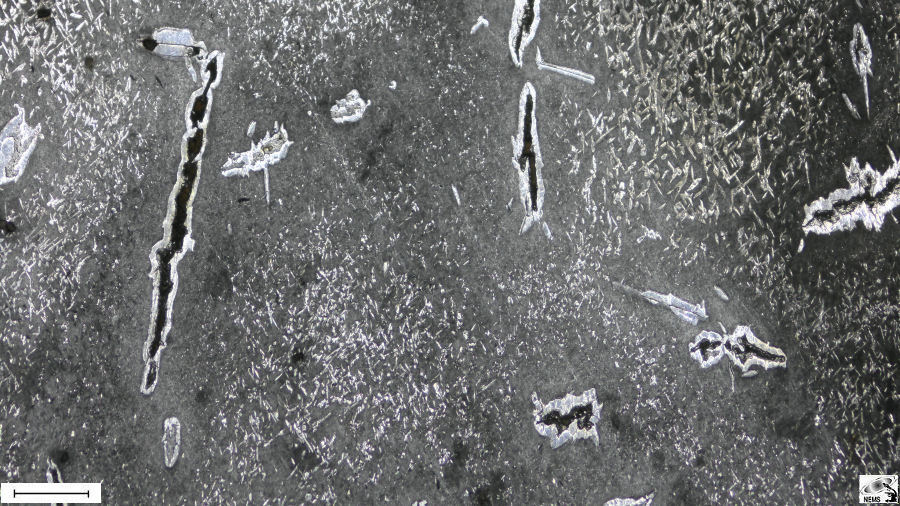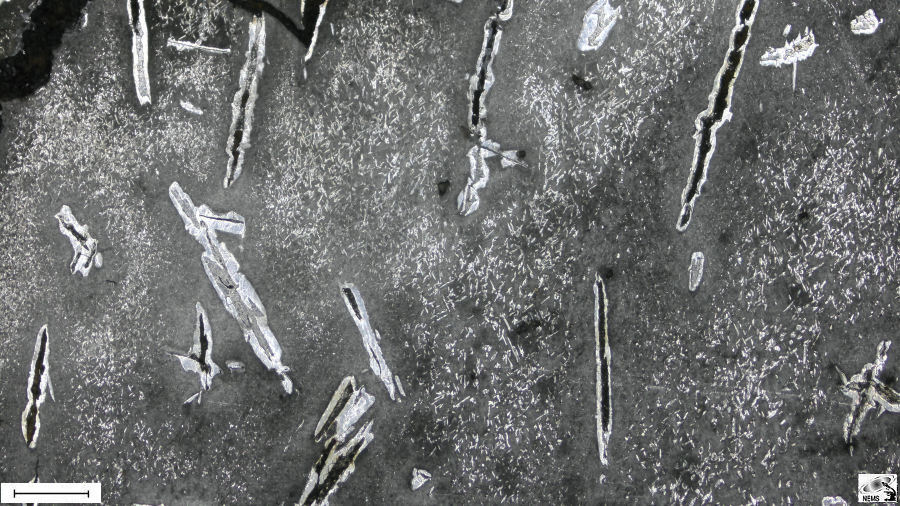|
||
Large kamacite spindles in an ungrouped iron |
| Return to Contents |
| Back...Next |
| Meteorite, Cowra, Ungrouped Iron. |

| Figure 1. Scale bar 400 µm. |
| Meteorite, Cowra, Ungrouped Iron. |
Large kamacite spindles typically form in iron meteorites with a nickel content ranging from 4% to 7.5%. The formation of kamacite spindles is less common in meteorites with higher nickel content, such as 13%. These meteorites are likelier to exhibit a smaller range of kamacite spindle structures. In iron meteorites, plessitic octahedrites are transitional between octahedrites and ataxites. They contain kamacite spindles within a matrix of taenite and plessite. This matrix can also include other minerals like schreibersite and troilite. A higher Nickel content ( >13%) mainly prevents Widmanstätten pattern development. Large kamacite spindles typically range from about 2 to 32 mm long and 0.5 to 1.5 mm wide in these meteorites. The spindles are often tapered and display three orientations on cut surfaces, similar to the Widmanstätten pattern in octahedrites Kamacite spindles can form during the meteorite's slow cooling. As the temperature drops, kamacite exsolves from taenite, creating these spindle-like structures. The large spindles in the images are swathing kamacite surrounding primary platy schreibersite crystals. In the plessitic background, numerous, much smaller spindles nucleated from kamacite grains. The microscopy images are of the Cowra, ungrouped iron, 13.38% Ni. Buchwald, 1975, originally described Cowra as a plessitic octahedrite. Refinement of the classification system now results in an "ungrouped" classification for Cowra. |

| Figure 2. Scale bar 400 µm. |
| Meteorite, Cowra, Ungrouped iron. |

| Figure 3. Scale bar 400 µm. |
| Meteorite: Cowra, Ungrouped iron. |
| Return to Contents |